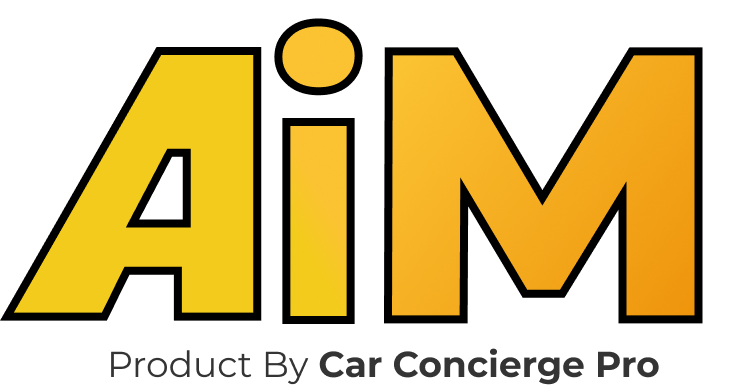When you receive your car insurance policy, the declaration page (or “dec page”) is one of the most important documents you’ll encounter. It’s essentially a summary of your coverage, listing the key details you need to know. Understanding your declaration page can help you ensure that you have the coverage you need and avoid any surprises when you file a claim.
Table of Contents
Understanding Your Car Insurance Declaration Page: A Comprehensive Guide
Your car insurance declaration page is one of the most critical documents in your policy. It provides a summary of your coverage, helping you confirm that your insurance meets your needs and complies with legal requirements. Here’s a detailed breakdown of what you’ll find on the declaration page and why it matters, expanded with data-driven insights and practical examples to help you understand its importance.
1. Policyholder Information
The declaration page begins by identifying the policyholder, or the person who owns the car insurance policy. This section includes essential information such as:
- Name of the Insured: The primary individual covered under the policy. If you’re the named insured, you’re the primary contact for the insurer.
- Address: The location where the insured vehicle is primarily garaged. This detail affects your premium as it reflects the area’s risk level.
- Policy Number: A unique identifier for your insurance policy. This number is crucial for filing claims, updating coverage, or contacting your insurer.
Why It Matters:
Confirming that this information is correct ensures there are no disputes about the policy’s validity. According to a 2021 survey by J.D. Power, 22% of insurance disputes arise from errors in policyholder information.
2. Vehicle Information
This section provides a detailed list of all vehicles covered under the policy. For each vehicle, the declaration page typically includes:
- Make, Model, and Year: Precise details of your vehicle, ensuring the correct car is covered. For example, a 2020 Toyota Camry LE will be listed explicitly.
- Vehicle Identification Number (VIN): A unique 17-character identifier for your vehicle. It ensures that coverage applies to the intended car and not a similar one.
- Coverage Limits: Details of how much coverage you have for liability, collision, and comprehensive protection for each vehicle.
In 2022, the National Association of Insurance Commissioners (NAIC) reported that vehicles with higher theft rates, such as the Honda Civic and Ford F-150, often have higher premiums. Ensuring your vehicle information is accurate helps avoid unnecessary rate increases.
3. Coverage Types and Limits
One of the most critical sections of the declaration page is the breakdown of your coverage types and limits. Here’s what you can expect to see:
Liability Coverage:
This protects you if you cause an accident that results in injury or property damage to others. It’s typically divided into:
- Bodily Injury Liability: Covers medical expenses and lost wages for others involved in the accident. For example, $50,000 per person/$100,000 per accident means your insurer will pay up to $50,000 for one person’s injuries and $100,000 total per accident.
- Property Damage Liability: Covers repair or replacement of another person’s property. A common minimum is $10,000, though experts recommend higher limits to avoid out-of-pocket expenses.
Collision Coverage:
This pays for damage to your own vehicle resulting from a collision, regardless of fault. For example, if your car’s repair costs $5,000 and your deductible is $500, you pay $500, and your insurer covers the remaining $4,500.
Comprehensive Coverage:
Covers damages caused by non-collision incidents, such as theft, vandalism, or weather-related events. For example, if a hailstorm damages your car’s windshield, comprehensive coverage applies after you pay the deductible.
Uninsured/Underinsured Motorist Coverage:
Protects you if you’re hit by a driver who lacks sufficient insurance. In Michigan, where approximately 26% of drivers were uninsured in 2021 (Insurance Research Council), this coverage is essential for financial protection.
Additional Key Details:
- Coverage Limits: The maximum amount your insurer will pay for each type of coverage.
- Deductibles: The out-of-pocket amount you pay before your insurance kicks in. For example, a lower deductible typically results in higher premiums.
Why the Declaration Page Matters
The declaration page is your go-to resource for verifying your coverage. A 2022 study by Consumer Reports found that 30% of policyholders were unaware of their exact coverage limits, which led to unexpected out-of-pocket expenses in claims.
Additional Tips for Policyholders:
- Review Annually: Update your declaration page whenever you buy a new vehicle, move to a new location, or make significant life changes.
- Understand Your Limits: Work with your insurance agent to ensure your limits align with your financial situation and risk tolerance.
- Compare Premiums: If your premium increases, use your declaration page to compare coverage with other insurers. According to The Zebra’s 2023 State of Auto Insurance Report, drivers save an average of $579 annually by switching providers.
Your car insurance declaration page is more than just a summary; it’s a critical tool for understanding your policy and ensuring adequate protection. By knowing what to look for and keeping your information up to date, you can avoid costly mistakes and ensure peace of mind on the road.
4. Premiums
The declaration page also provides a clear breakdown of your premiums—the total cost of your insurance coverage. Here’s what to look for:
- Total Premium: The overall cost of your policy, including all coverages and fees.
- Breakdown of Premium: An itemized list showing how much you’re paying for each type of coverage, such as liability, collision, and comprehensive.
- Payment Schedule: Information about how often you’ll make payments (e.g., monthly, quarterly, or annually) and specific due dates.
Why It Matters:
Understanding your premiums ensures you know exactly what you’re paying for and can budget accordingly. According to the Insurance Information Institute (III), paying premiums annually instead of monthly can save policyholders up to 10% due to reduced administrative fees.
5. Additional Coverages or Endorsements
Many policies allow you to customize your coverage with optional endorsements. Common examples include:
- Roadside Assistance: Offers services like towing, fuel delivery, and flat tire changes. In 2020, AAA reported that their roadside assistance programs handled over 32 million calls.
- Rental Car Reimbursement: Covers the cost of a rental car while your vehicle is being repaired after an accident.
- Custom Parts and Equipment Coverage: Protects aftermarket modifications, such as upgraded stereo systems or custom paint jobs.
Why It Matters:
Optional coverages can provide added peace of mind and protect you from unexpected expenses. For example, roadside assistance costs an average of $15–40 annually but can save hundreds in towing fees.
6. Discounts
Your declaration page will also list any discounts applied to your policy. Common discounts include:
- Good Driver Discount: For maintaining a clean driving record over a specified period. According to a 2021 study by The Zebra, good drivers save an average of 26% on premiums.
- Multi-Policy Discount: Bundling auto insurance with other policies, like homeowners or renters insurance, can save up to 25%.
- Low Mileage Discount: If you drive fewer than 7,500 miles per year, you may qualify for savings of 5–10%.
Why It Matters:
Taking advantage of discounts can significantly reduce your overall premium costs. Be sure to ask your insurer about available discounts and eligibility criteria.
Why the Declaration Page Matters
The declaration page is your go-to resource for verifying your coverage. A 2022 study by Consumer Reports found that 30% of policyholders were unaware of their exact coverage limits, which led to unexpected out-of-pocket expenses in claims.
Additional Tips for Policyholders:
- Review Annually: Update your declaration page whenever you buy a new vehicle, move to a new location, or make significant life changes.
- Understand Your Limits: Work with your insurance agent to ensure your limits align with your financial situation and risk tolerance.
- Compare Premiums: If your premium increases, use your declaration page to compare coverage with other insurers. According to The Zebra’s 2023 State of Auto Insurance Report, drivers save an average of $579 annually by switching providers.
Your car insurance declaration page is more than just a summary; it’s a critical tool for understanding your policy and ensuring adequate protection. By knowing what to look for and keeping your information up to date, you can avoid costly mistakes and ensure peace of mind on the road.
Understanding your insurance declaration page thoroughly will not only save you money but also help you make informed decisions in times of need. Ensure it reflects your needs accurately and aligns with your lifestyle, providing the confidence to navigate the complexities of car insurance.
7. Policy Effective Dates
The declaration page will also show the dates when your policy starts and ends, along with the renewal date. This is crucial to ensure that your coverage is active, and it will alert you if your policy is nearing its expiration.
Importance of Tracking Effective Dates:
Failure to renew your policy on time could result in a lapse in coverage, leading to fines or legal consequences. The Insurance Information Institute emphasizes that a lapse in coverage can increase your premium by an average of 35% when you purchase a new policy.
8. Insurance Company Information
Lastly, the declaration page will provide the contact details of your insurance company, including:
- Insurance Provider Name: The company that’s underwriting your policy.
- Contact Number and Website: How to get in touch with the insurer for claims or inquiries.
- Emergency Contact Information: Specific numbers for roadside assistance or urgent claim reporting.
Why It Matters:
Having quick access to your insurer’s contact information can save valuable time during an emergency or when filing a claim.
Why the Declaration Page Matters
The declaration page is your go-to resource for verifying your coverage. A 2022 study by Consumer Reports found that 30% of policyholders were unaware of their exact coverage limits, which led to unexpected out-of-pocket expenses in claims.
Additional Tips for Policyholders:
- Review Annually: Update your declaration page whenever you buy a new vehicle, move to a new location, or make significant life changes.
- Understand Your Limits: Work with your insurance agent to ensure your limits align with your financial situation and risk tolerance.
- Compare Premiums: If your premium increases, use your declaration page to compare coverage with other insurers. According to The Zebra’s 2023 State of Auto Insurance Report, drivers save an average of $579 annually by switching providers.
- Check for Updates: Ensure any endorsements or discounts are accurately reflected and request corrections for errors immediately.
Your car insurance declaration page is more than just a summary; it’s a vital tool for understanding your coverage, premiums, and options. By reviewing this document thoroughly, you can ensure that your policy provides the protection you need. If anything is unclear, contact your insurer for clarification.
For more information on auto insurance, tips for saving on premiums, or advice on understanding your policy, feel free to reach out to our team of experts. Taking the time to understand your declaration page can save you money, prevent misunderstandings, and give you peace of mind on the road.



